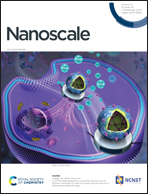Inorganic nanoparticle agents for enhanced chemodynamic therapy of tumours
Abstract
With the recent interest in the role of oxidative species/radicals in diseases, inorganic nanomaterials with redox activities have been extensively investigated for their potential use in nanomedicine. While many studies focusing on relieving oxidative stress to prevent pathogenesis and to suppress the progression of diseases have shown considerable success, another approach for increasing oxidative stress using nanomaterials to kill malignant cells has suffered from low efficiency despite its wide applicability to various targets. Chemodynamic therapy (CDT) is an emerging technique that can resolve such a problem by exploiting the characteristic tumour microenvironment to achieve high selectivity. In this review, we summarize the recent strategies and underlying mechanisms that have been used to improve the CDT performance using inorganic nanoparticles. In addition to the design of CDT agents, the effects of contributing factors, such as the acidity and the levels of hydrogen peroxide and antioxidants in the tumour microenvironment, together with their modulation and application in combination therapy, are presented. The challenges lying ahead of future clinical translation of this rapidly advancing technology are also discussed.

- This article is part of the themed collection: Recent Review Articles


 Please wait while we load your content...
Please wait while we load your content...